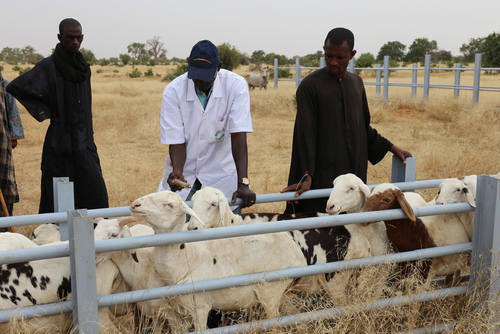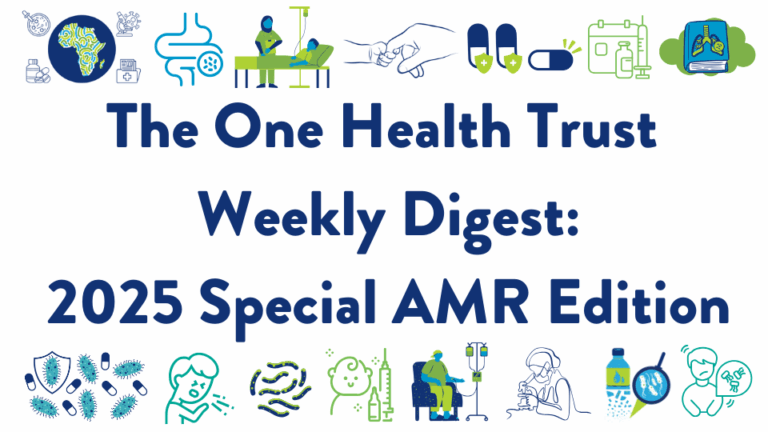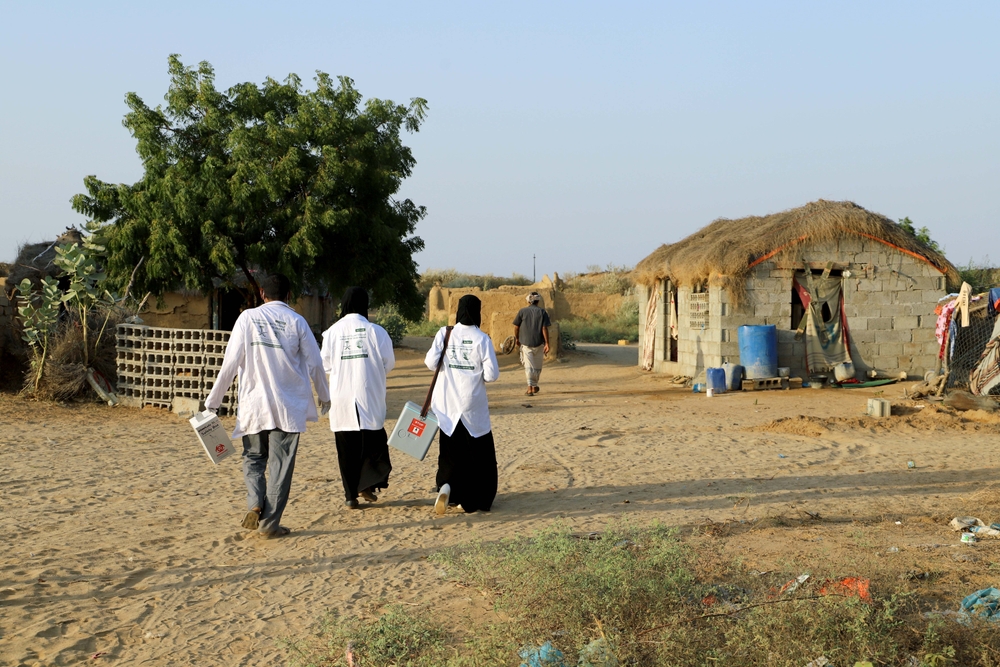July 22, 2024

The potential of vaccines for food-producing animals in low- and middle-income countries
OHT’s Dr. Ramanan Laxminarayan co-authored an article that outlines the importance of vaccinating food-producing animals in low- and middle-income countries to prevent the spread of zoonotic diseases and antimicrobial resistance, fight poverty, and promote food security. Animal vaccines can maximize economic gains among farmers, reduce spillover risk, lower greenhouse gas emissions, and minimize antibiotic use and resistance in food-producing animals. Funding for animal vaccine research and development is urgently needed to transform their potential to mitigate the health, economic, and environmental risks of zoonotic diseases. [Science]
Post-COVID nutritional outcomes in under-five children
OHT researchers Amit Summan, Arindam Nandi, and Ramanan Laxminarayan analyzed data from India’s National Family Health Survey 2019-2021 to assess post-COVID nutritional outcomes among children. The study revealed that under-five children had 1.2 percent higher underweight rates, 0.10 percent lower height-for-age Z-scores, and 0.04 percent lower weight-for-height Z-scores than children of the same age in the pre-pandemic period. Although a partial recovery was observed in the post-pandemic period between 2020 and 2021, some outcomes, including weight, did not fully recover, especially among children from rural and low-income households. [Nature Communications]
The influence of health status on labor outcomes for middle-aged and older adults in India
Ill-health impacts labor force participation globally, yet age differences are often overlooked. A study by OHT’s Dr. Srikanth Reddy addresses this gap by examining how ill health affects labor outcomes among different age groups in India. Data from over 72,000 individuals aged 45 and above from the Longitudinal Ageing Study show that ill-health reduces labor participation by 28 percent for middle-aged and 36 percent for elderly individuals. The impact on wages and hours worked varies by age, with elderly individuals being more affected. [PLOS ONE]
Livestock farm restrictions reduce the abundance of antibiotic resistance genes in nearby water bodies.
A longitudinal study in Jiulong River, China, found that environmental restrictions on livestock farms near water bodies significantly reduced the abundance of antibiotic resistance genes (ARGs). Over the nine-year study period, the abundance of ARGs, particularly those conferring resistance to tetracyclines, aminoglycosides, and multidrug combinations, decreased. Microbial source tracking revealed that swine and poultry fecal indicators decreased while those from human sources remained steady over time, indicating that the decline in ARGs from animal excreta mainly contributed to the overall reduction in ARGs. [Environment International]
Effective disease surveillance should prioritize wastewater monitoring.
The COVID-19 pandemic exposed the limitations and shortcomings of existing disease surveillance systems, including underreporting and reporting delays, global health security gaps, and a lack of coordination across sectors. A global One Health approach should be used to monitor and address emerging zoonotic diseases, particularly in the context of increasing travel, trade, and climate change. A wastewater surveillance system that uses a “one sample, many analyses” approach could help identify disease hotspots across human, animal, and environmental habitats. [Nature Communications]
Wildlife as reservoirs, hosts, and vectors of clinically important bacterial pathogens
A review outlined the overlooked role of wildlife as hosts and vectors of clinically significant bacteria (such as Escherichia coli and methicillin-resistant Staphylococcus aureus). The extended-spectrum beta-lactamase (ESBL)-producing and ampicillin resistance-encoding genes were the most frequently identified ARGs in wild birds, mammals, and reptiles. Wild animals are known to cross between natural and urban environments and come into contact with humans and livestock, underscoring their importance for global AMR surveillance. [International Journal of Antimicrobial Agents]
Estimating the prevalence of E. coli in Madagascar through a One Health lens
A prospective genomic epidemiology study found that ESBL-producing E. coli is prevalent in humans, chickens, and surface waters in Antananarivo, Madagascar. Using a World Health Organization One Health surveillance protocol, ESBL-E. coli was detected in 30 percent of surveyed pregnant women, 57 percent of chickens, and virtually all surface water samples. The wet season (November to April) was associated with higher carriage rates in humans (odds ratio = 3.08) and chickens (OR = 2.79). [The Lancet Microbe]
Tanzania’s effective response to an outbreak of Marburg viral disease
In March 2023, Tanzania declared its first-ever outbreak of Marburg viral disease (MVD) which also included five reported fatalities. Shortly after, an infection prevention and control (IPC) needs assessment informed the development and delivery of mentorship programs for healthcare workers, IPC policies, and biosecurity measures. By the end of the outbreak response in June 2023, 212 contacts were identified, and only three additional deaths were reported, highlighting the importance of strict IPC adherence for disease management and control in resource-limited settings. [BMC Infectious Diseases]
High maternal educational attainment was associated with protection against under-five malaria.
An analysis of malaria survey data from under-five children in Tanzania, Mozambique, Angola, Burkina Faso, Nigeria, Uganda, and Niger revealed that the overall pooled prevalence of malaria was 26.2 percent. Children of mothers with a higher education level were associated with a lower malaria risk compared to children whose mothers had no formal education (adjusted prevalence ratio = 0.586). Children whose mothers took prophylactic malaria medication in pregnancy were also associated with a reduced risk of malaria compared to those who did not (aPR = 0.731). [BMC Public Health]
Application of a new fungal detection method during the COVID-19 pandemic
The prevalence of Candida spp. in wastewater samples in Rio de Janeiro, Brazil was used to track viral genetic material and virulence factors during the COVID-19 pandemic. The results of this study support the use of a workflow for monitoring wastewater for fungal pathogens that utilizes colony-based polymerase chain reaction (PCR) instead of conventional PCR to rapidly detect emerging fungal threats. [BMC Biotechnology]
Strengths and weaknesses of organizations involved in the governance of the wildlife trade
A mixed methods analysis of organizations involved in the governance of the wildlife trade revealed strong connections across several sectors, including the animal, human, and environmental health sectors. Barriers to effective interaction among these organizations and prevention of zoonotic disease spread through the wildlife trade included conflicting priorities and goals and power dynamics that led key stakeholders to perceive the human health sector as more influential in preventing zoonoses, despite its historically low engagement in this work. [Globalization and Health]
Image from Shutterstock











